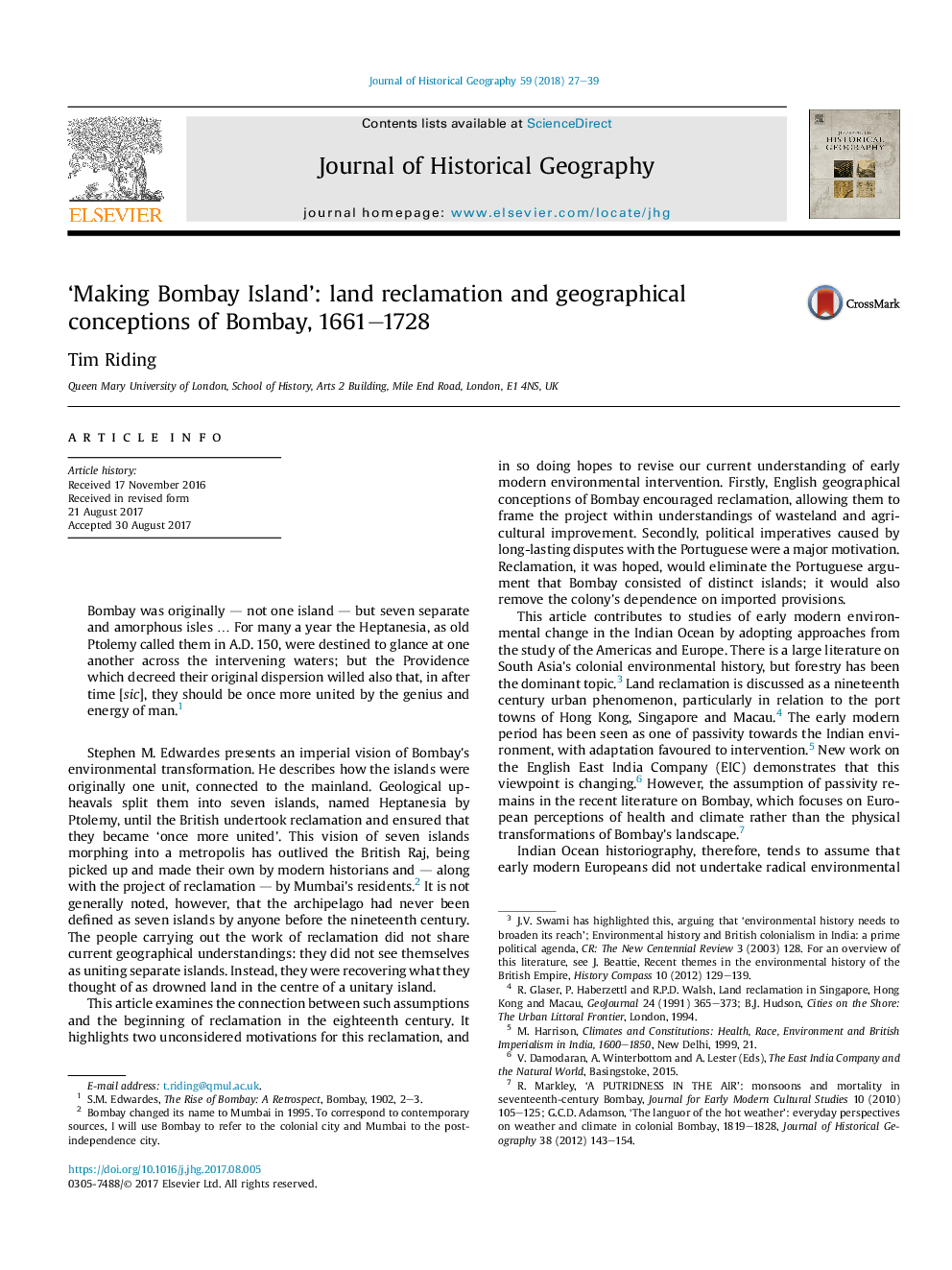| Article ID | Journal | Published Year | Pages | File Type |
|---|---|---|---|---|
| 7446979 | Journal of Historical Geography | 2018 | 13 Pages |
Abstract
This article examines the connection between geographical conceptions of the Bombay archipelago and the uniting of the islands through land reclamation. The modern assumption is that before reclamation, Bombay consisted of seven islands. No early modern observers understood Bombay in this way, however. Its geography was hotly contested during the Anglo-Portuguese transfer in the 1660s. While the Portuguese thought of the archipelago as four distinct islands, the English reinterpreted it as two, and this perception informed their attitudes to Bombay's environment. Highlighting the importance of this factor offers a revised understanding of Bombay's early land reclamation. By focusing on the build-up to the first major reclamation in 1710, this article argues that reclamation was a reaction to the region's harsh geopolitical climate. The aggressive programme of environmental transformation was an attempt to remove Bombay's dependence on imported provisions. It also sought to bolster English claims to the islands by physically eliminating the Portuguese argument that Bombay consisted of distinct islands. By considering the interplay between geographical conceptions and political imperatives, this article revises our understanding of what motivated early modern environmental change. Finally, the article discusses the imperial origins of the idea that Bombay was once seven islands, revealing the extent to which geographical conceptions and the meaning of environmental intervention changed over time. This challenges simple distinctions between urban and agricultural reclamation.
Related Topics
Social Sciences and Humanities
Arts and Humanities
History
Authors
Tim Riding,
